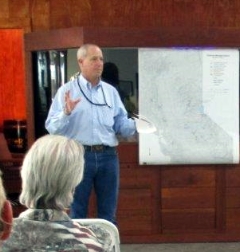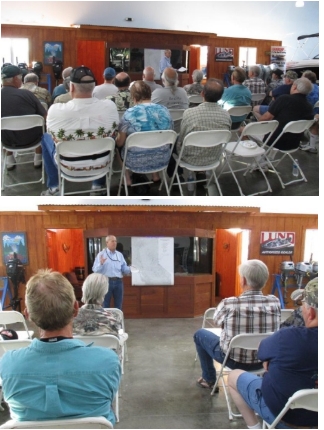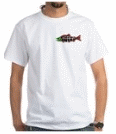 A CIFFI General Meeting ”Blast” took place at Gone Fishin’ Marine, Dixon, on Wednesday, May 18, 2016. Guest Speaker was STAFFORD LEHR, CDFW Deputy Director of Fish & Wildlife. Dave Hurley, editor of “USAFishing.com”, attended the meeting and below is his summary of the comments made by Mr. Lehr.
A CIFFI General Meeting ”Blast” took place at Gone Fishin’ Marine, Dixon, on Wednesday, May 18, 2016. Guest Speaker was STAFFORD LEHR, CDFW Deputy Director of Fish & Wildlife. Dave Hurley, editor of “USAFishing.com”, attended the meeting and below is his summary of the comments made by Mr. Lehr.
"I was fortunate to attend the CIFFI.Inc Blast Wednesday evening at Gone Fishing Marine in Dixon, and the small gathering was able to have uninterrupted contact with the acting Deputy Director of the California Department of Fish and Wildlife, Stafford Lehr. He spoke for nearly an hour and responded to questions from the audience, not dodging any question. He made a number of important points – first, hunters and fishermen have always depended upon the Department of Fish and Game to look out for their interests, but it is more important than ever that outdoorsmen advocate for their interests and become activists. Those who desire habitat and water for their own interests are packing meetings and paying for high-priced representatives, so it is essential to become involved. Second, the last several years of drought have had a huge effect on California’s fisheries, but the artificial fisheries of landlocked salmon, trout, and kokanee can be rebuilt within three to five years if there is enough water. Third, striped bass are only one of eight factors resulting in the
decline of Sacramento River salmon runs, and there are a number of studies in process regarding mitigation of ‘hot spots’ throughout the Delta and the Sacramento Delta. The ‘hot spots’ are man-made structures where striped bass, pike minnows, and other non-native species are able to ambush smolts. The  Department of Water Resources exercised their right to take striped bass and other invasive species out of the Clifton Court Forebay, but the DFW would not allow the fish to be destroyed as initially proposed. Bethany Reservoir near Clifton Court Forebay was the solution to allow fishermen to catch these captured striped bass. Fourth, the state is only releasing 3.8 million of the 18 million salmon smolts through the river systems. The majority of salmon smolts will be released via net pens in the Delta or San Pablo Bay. Fifth, due to the increased water temperatures in the ocean and the Klamath Rivers last summer, the eggs of many female salmon were void, resulting in only 165,000 smolts for inland waters south of Lake Shasta. Since Folsom Lake has the best conditions, 40,000 king salmon will be planted there with 125,000 in Lake Oroville. The five salmon hatcheries are mitigation facilities for the dams built on the rivers, and only excess salmon smolts are released into inland waters. All inland salmon smolts come from Iron Gate hatchery on the Klamath River. Finally, the department spent 72 million dollars for drought relief, and this is contrasted with the lack of resources and money in the 76/77 and 87/92 droughts. For instance, the electricity bill for the chillers in the American River hatchery to keep the river cool cost over $10,000/month to operate.
Department of Water Resources exercised their right to take striped bass and other invasive species out of the Clifton Court Forebay, but the DFW would not allow the fish to be destroyed as initially proposed. Bethany Reservoir near Clifton Court Forebay was the solution to allow fishermen to catch these captured striped bass. Fourth, the state is only releasing 3.8 million of the 18 million salmon smolts through the river systems. The majority of salmon smolts will be released via net pens in the Delta or San Pablo Bay. Fifth, due to the increased water temperatures in the ocean and the Klamath Rivers last summer, the eggs of many female salmon were void, resulting in only 165,000 smolts for inland waters south of Lake Shasta. Since Folsom Lake has the best conditions, 40,000 king salmon will be planted there with 125,000 in Lake Oroville. The five salmon hatcheries are mitigation facilities for the dams built on the rivers, and only excess salmon smolts are released into inland waters. All inland salmon smolts come from Iron Gate hatchery on the Klamath River. Finally, the department spent 72 million dollars for drought relief, and this is contrasted with the lack of resources and money in the 76/77 and 87/92 droughts. For instance, the electricity bill for the chillers in the American River hatchery to keep the river cool cost over $10,000/month to operate.
Bottom line – there are a number of complicated issues facing the ability to keep hunting and fishing – we have to get involved, and we really have to get our youth involved as nearly every fishing club is aging rapidly."






